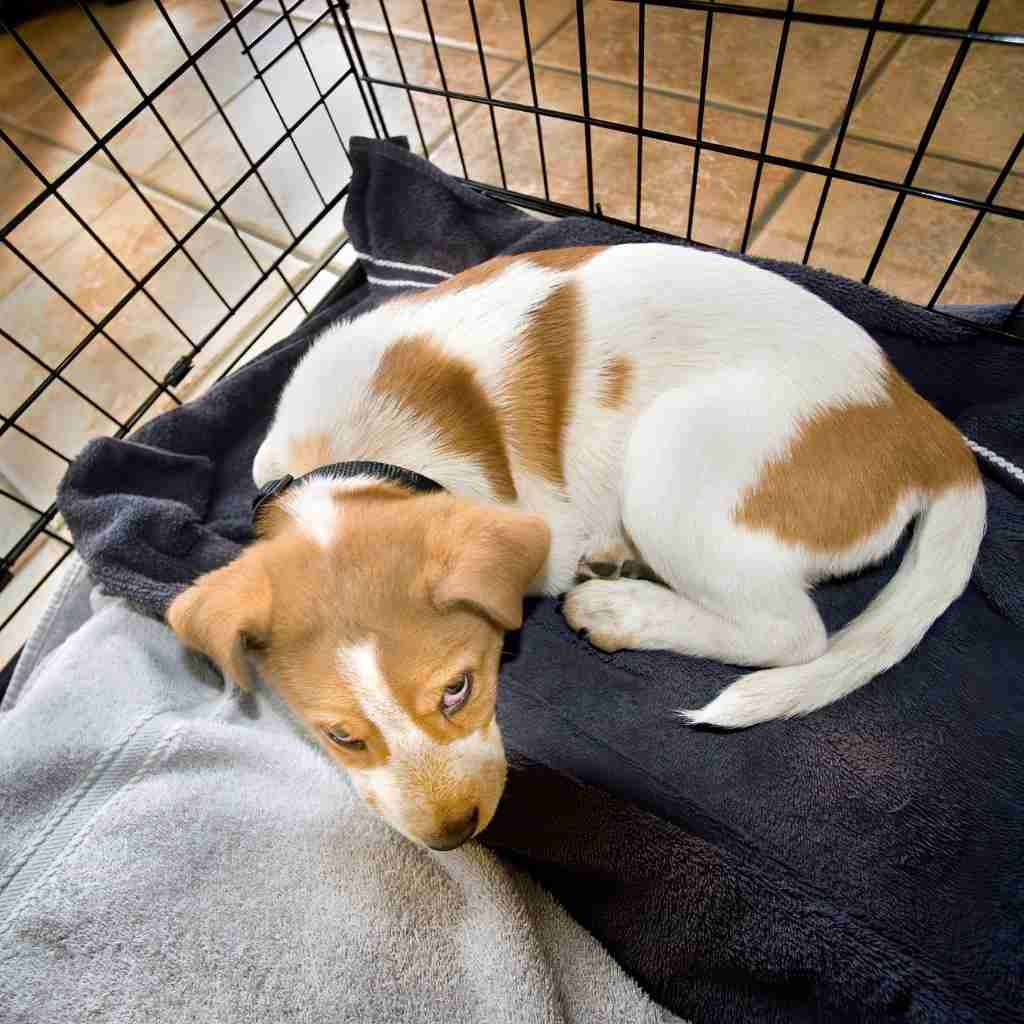Obedience Training Vero Beach -Tips To Crate Training Your Puppy
For obedience training, crate training is a handy tool, especially during early puppyhood and the adolescent puppy stage – when your puppy is still learning the house rules! It’s important to take the time to help your puppy form positive associations with their crate, so they enjoy spending time there.
The Misconception
Your puppy’s crate is not for punishment, but that doesn’t mean you should never use it! Using it as a time-out space when your puppy needs some downtime is not a punishment. So long as you put your puppy in their crate calmly, and do not lose your temper or yell at your pup, it’s not a punishment to use your crate to help you both! If your puppy is getting the zoomies, becoming bitey and out of control, then your pup needs some crate time to calm down.
Ok, shall we get started on how to crate train your puppy, so they think it’s the best place ever?!
Your 7 step puppy crate training plan:
We want your puppy’s crate to be a happy place for them. It’s a place where they can spend time when you’re unable to give them your full attention or when they need to wind down a little and take a nap. These 7 steps will help show your puppy that their crate is a safe, fun, and relaxing place to be.
Step 1 – Choose a crate for your puppy
Typically, you’ll choose between a plastic, metal, or fabric crate for your puppy. You want a crate with enough room for your puppy to stand up and turn around comfortably. Puppies grow pretty fast, so opt for a crate that will comfortably fit your pup when they’re fully grown. If you need a large crate for your adult dog, then get a divider to reduce the crate size while they’re small. Please be aware that fabric crates are not ideal for avid chewers or determined escape artists – a metal or plastic crate will be a better choice here.
Step 2 – Choosing where to put your puppy’s crate
I recommend having your puppy’s crate in a low-traffic area of the home where your pup will be relatively undisturbed to help them settle and get the rest they need. You can put your puppy’s playpen in a more active area of the home for awake time, such as your living room or kitchen.
To begin with, your puppy will probably sleep best if their crate is in your bedroom until they’re more confident about spending time alone. It may mean you need two crates or that you move the crate into your bedroom at night. I recommend having the crate in your bedroom for the first night or two before gradually moving it out of the bedroom. This way, your pup won’t wake up every time they hear you stir, resulting in better sleep for both of you and fewer middle-of-the-night potty trips!
Step 3 – Make your puppy’s crate comfortable
Your puppy will need a comfy bed or blanket in their crate and a toy or two. These little extras can help make it an easier transition for your puppy. Puppies can get quite hot at night, so I often use a folded-up towel which is easy for your pup to move if they get too warm. For nighttime, you may consider using a heartbeat toy that mimics the feeling of being close to their mom. Remember, your puppy has been used to being with all their littermates, so sleeping alone is a brand new skill for them to learn.
Step 4 – Introducing your puppy to a crate
Ok, so your puppy’s crate is ready for you to introduce them to it! If your puppy had a crate at their breeders, then they may already be quite comfortable with the idea of hopping inside. Or, your puppy may appear nervous at the thought of this new contraption! Start slow. We do not intend to close the door on the crate until your puppy is comfortable.
We want your puppy to see their crate is fantastic, so grab some yummy treats and start with a simple crate training game.
- Sit on the floor next to the crate with the door open.
- Toss some treats inside the crate for your puppy to retrieve.
- Once your pup hops inside the crate to gobble them up, toss some more treats inside to encourage your pup to stay in their crate a little longer.
This will start to build your puppy’s confidence with the crate, without fearing they’re going to be locked inside.
Step 5 – Closing the crate door
Next, we want to begin opening and closing the crate door, to show your puppy that it’s no big deal.
- Toss a treat inside the crate.
- When your puppy hops inside to get it, close the crate door and then open it again immediately.
- Toss a treat away from the crate with the door open, so your pup can jump out of the crate.
- Rinse and repeat.
Slowly build up the time you have the crate door closed, always opening the door before your puppy shows any signs of distress.
Step 6 – Building up time spent in the crate
Once your puppy is comfortable hopping in and out of the crate, we want to build up the time they spend inside. Using a stuffed food toy here is helpful. I recommend the WestPaw Toppl as a first food toy for your puppy. Here, you can read more about teaching your puppy how to use food toys. Pop some canned wet puppy food inside, or use a little xylitol-free peanut butter or natural yogurt, so it takes your pup a little while to eat. Give your puppy their yummy stuffed food toy inside their crate, and sit close by as they settle.
You’re now ready to begin moving around the room or leaving the room for short bursts while your puppy enjoys their treat time in its crate.
Step 7 – Keep an eye on the time
Ensure your puppy gets regular time out of the crate to meet all their needs. If we want your puppy to think the crate is a wonderful place to be, then we need to be careful they don’t spend too much time in there at once. Your puppy needs playtime, toilet time, and interaction with its human.
When your puppy first comes out of the crate, they need to go straight outside for a potty break.
A crate can be a valuable tool in your potty training plan, but they don’t remove the need for regular potty breaks.
4 key benefits of crate training your puppy
- Crate training can help with potty training!
- Crate training helps prevent destructive behavior, such as chewing when you’re not looking.
- Crate travel is the safest way for your dog to travel.
- Crate training can help your dog cope when they have to be crated at the vet in the future.
I hope you’ve found these tips helpful. I’ve got lots more handy puppy training tips and advice for you in my ultimate guide to starting your puppy training on the right paw! It’s free, and you can get instant access below.
Puppy Obedience Trainer Vero Beach, Florida
For expert advice on all aspects of puppy training in Vero Beach and the surrounding area contact me or arrange a FREE consultation call to discuss how we can work together to give you a dream dog.

Obedience Training Classes Vero Beach, Fl.
Goldstar puppy training programs offer a revolutionary blend of in-person private puppy training, home-study tutorials, and group puppy classes.
We provide puppy training in Vero Beach and all areas of the Treasure Coast, Florida.
Through years of experience, we’ve discovered that this is the most effective way to train your puppy successfully. Your puppy progresses their new skills easily, with the optimum conditions to promote powerful learning that lasts.
So that you can enjoy life with a dog who is confident, well behaved, and an upstanding member of doggy society!
Check out some of Gerry-Anna’s amazing reviews.
Book your FREE consultation today for expert puppy training advice and find out how Gerry-Anna can help you and your puppy live stress-free.

